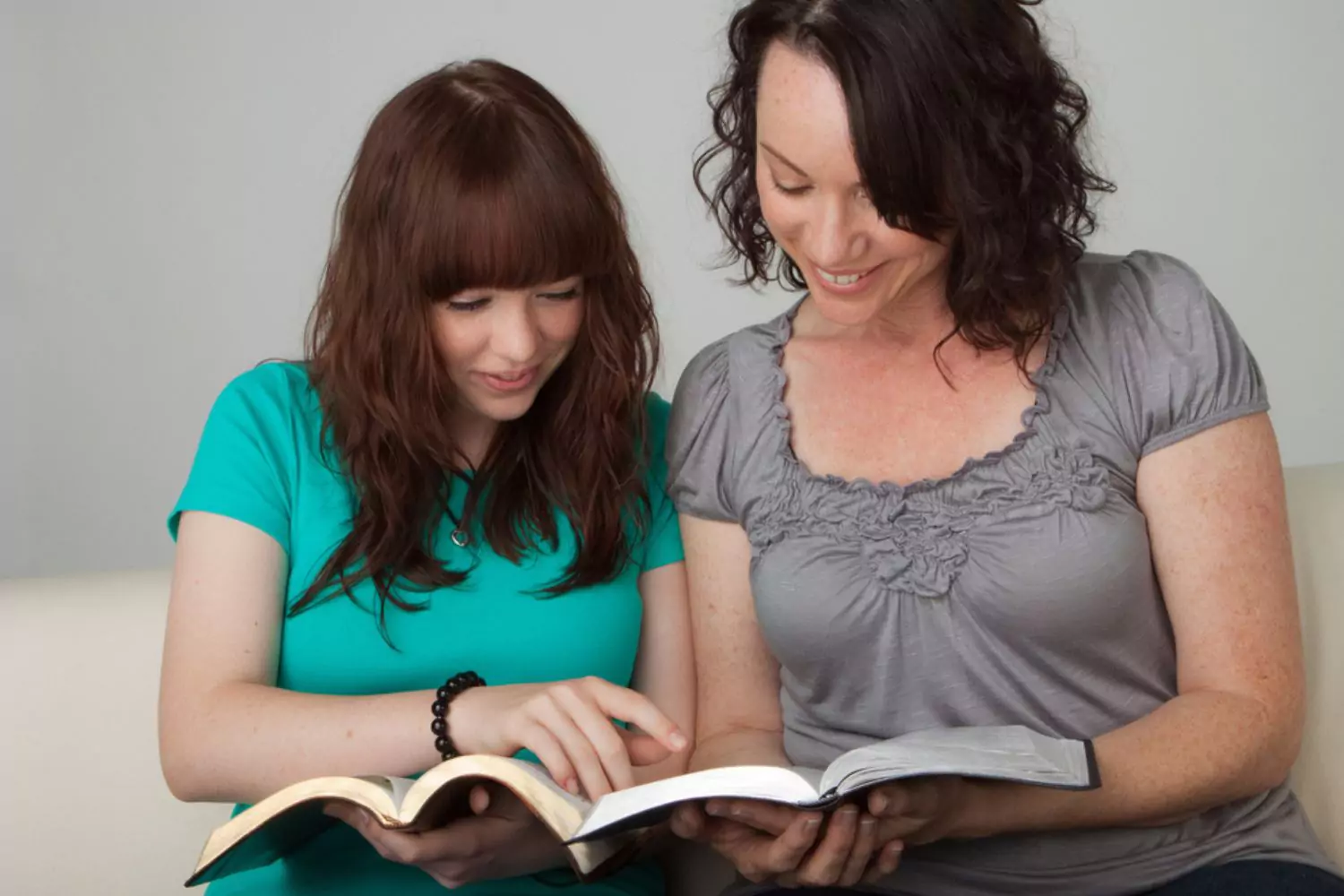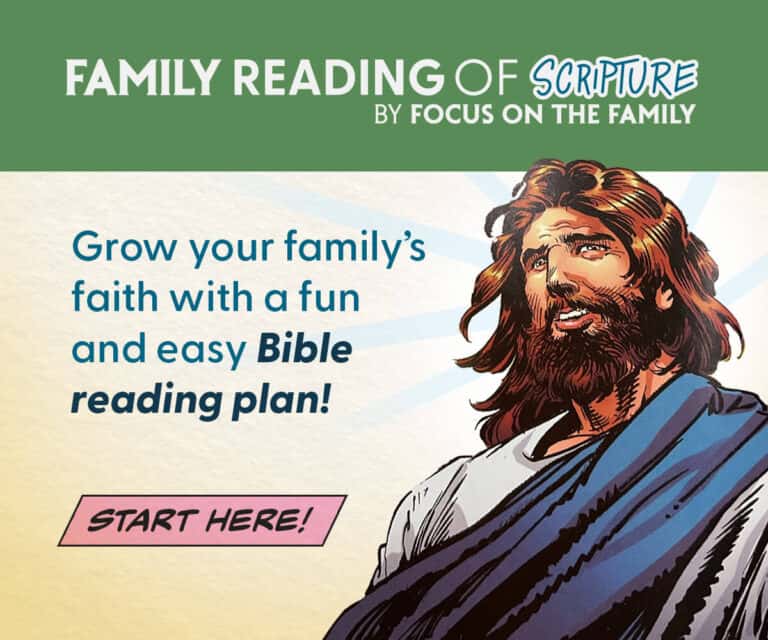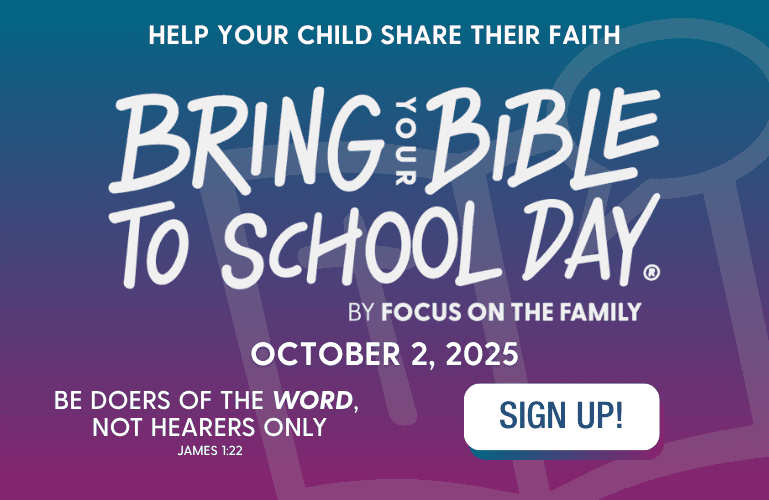Estimated reading time: 8 minutes
As Christian parents, we want to introduce our kids to Jesus and see them grow in their relationship with God. One of the best ways to do that is to encourage them to read the Bible regularly. But it’s more than just having your kids read the Bible — it’s teaching them how, and where to start reading.
Why should you teach your kids how to read the Bible?
We’re told that “All Scripture is breathed out by God and profitable for teaching, for reproof, for correction, and for training in righteousness, that the man of God may be complete, equipped for every good work” (2 Timothy 3:16-17).
The importance of reading God’s Word is clear, and it’s certainly a habit worth passing down to our kids. So, how do we do that? Well, it’s a bit more nuanced than simply telling your child to read the Bible.
Helping your kids get started
The Bible is a big book — a rich text conveying God’s message of hope for the world through various historical contexts and literary styles. For your child, deciding how to read the Bible raises plenty of its own questions. Where should they start? Should they read from beginning to end, Genesis to Revelation? Should they only read the New Testament? It can be more than a little intimidating to jump into, even for an adult.
Fortunately, they have you to help them!
You can equip your kids not only to read God’s Word but to process it and make it a part of their lives. And you don’t have to be a Bible scholar to do it!
Here’s an easy way to teach your kids to dive into God’s Word: show them how to R.E.A.D. the Bible!
How to R.E.A.D. the Bible
This simple acrostic is a perfect way to train your kids to not just read the words in the Bible, but to process, internalize, and put them into practice. It stands for Read, Engage, Apply, and Discuss.
Read
If your child is going to R.E.A.D. the Bible, they’ve got to read it first. Simple, right? In Matthew 4:4, Jesus says, “It is written, ‘Man shall not live by bread alone, but by every word that comes from the mouth of God.’” You feed your kids every day, so frame Bible reading in that context. You need food to be strong and healthy, so you eat every day. Your spirit needs that, too. But its food is the word of God found in the Bible.
Just like you have mealtimes each day, help your child schedule their own “spiritual mealtimes” to read Scripture. Encourage them to be consistent! 15 minutes of Bible reading each day will often stick in their minds more than an hour once a week. We don’t eat once a week! It’s a daily process.
Make sure to avoid the “this is the way it’s always been done” mindset when it comes to reading God’s Word. Your goal is to ignite a passion for the Bible in your child. Talk with them about the different things written in God’s Word and see what piques their interest. Then, you can begin helping them build a cohesive reading plan that they can be consistent with. Creativity is key! But if you’re still looking for some suggestions on where to start, we’ve got some for you at the bottom of this article.
Engage
While reading the Bible consistently is nice, ideally, you’ll want your child to really connect with God’s Word. In Psalm 119:11, it says, “I have stored up your word in my heart, that I might not sin against you.” That’s exactly what you’re looking for! You want your child to internalize the words that God had given them.
To do this, start thinking about what interests your child. Do they have an artistic bent? Encourage them to doodle pictures or create a “mind map” of what they are reading. Maybe they would like to act out the reading like a play or sing the words they read in a musical tune they enjoy. If you can tie in their Bible reading to something that God has given them a passion for, it will be much more effective and enjoyable to store up God’s Word in their hearts!
Encourage your kids to identify words, phrases, or even themes they discover during their Bible reading time. They can keep a notebook of these highlights for further discussion (more on that below). Another helpful thing is connecting what your child reads with history. The Bible recounts real, historical things that happened — and it’s beneficial for your kids to understand at least some of the historical context of what they are reading.
Apply
The Bible instructs us to “be doers of the word, and not hearers only, deceiving yourselves” (James 1:22). As Christians, we’re called to live out the words we read in the Bible. As your child reads and engages with God’s Word, you’ll want to be sure to encourage them to apply it in their own life.
Encourage your child to think of ways they can be “doers of the Word” and then help them follow through on their ideas! For example, your child might set a goal to do something nice for a classmate because they read Mark 12:31 and want to love their neighbor. You can come alongside them to support them — which includes instructing them and providing guidance — as an advocate, instead of just telling them what to do.
It’s also important that you communicate to your child that we can’t be doers of the Word without God’s help. It is the Holy Spirit’s power working in us that allows us to live our lives in a way that pleases God and apply what we read in the Bible. A perfect verse to pray over together and read as you discuss this is Philippians 4:13: “I can do all things through him who strengthens me.”
Discuss
Finally, encourage your child in their Scripture reading journey by discussing it. Allow them time to share what they have read and what they think about it. Being able to explain what they have been reading is a huge part of the retention process.
Make sure that your child feels comfortable sharing their thoughts, questions, and even doubts and concerns. Create a safe environment for discussion in your home. You won’t know all the answers to the questions they may have, and that’s okay. Be open and honest and willing to dig into God’s Word together to talk through things.
Their conversations with you can go a long way to help them be comfortable in sharing their faith with others. 1 Peter 3:15b tells us, “in your hearts honor Christ the Lord as holy, always being prepared to make a defense to anyone who asks you for a reason for the hope that is in you; yet do it with gentleness and respect.” By fostering an environment of discussion with your child, you are preparing them to share the Good News with those around them.
Where to start reading the Bible
If you are trying to decide where to start reading the Bible with your son or daughter, here are some suggestions:
Luke and Acts
A great place for your child to start reading is the Gospels. The story of Jesus’ life, death, and resurrection is the foundation of life in Christ. Any Gospel account would be a wonderful place to start reading the Bible, but why not go from Luke straight to Acts together? Both books were written by Luke, and were intended to be read together (Acts 1:1). You can read the words of Jesus and then follow it up with the early Church’s history. It provides some great historical context and powerful examples of Christian faith.
Proverbs
Reading through Proverbs can be a good place for your child to start reading God’s Word. The book contains timeless wisdom that your child can ponder and apply in their life.
Psalms
The Psalms contain some powerful Scriptures that touch on deep emotions. It could be the perfect thing to spur deeper conversations with your child, particularly as walk through the joys and challenges of life with them.
Together Is best
As you have seen, the best way to encourage your child to read the Bible and live it out is to do it together. There is no better way to pass down this practice than to lead by example. When your child reads God’s Word, it’s an opportunity for them to draw closer to Jesus. And when you are there to support them, you’ll draw closer together as well.
Teach your child how to read the Bible and choose a place to start reading, and join them on the journey. Hold each other accountable and be consistent. Talk about it often and look for ways to live out God’s words together.



















